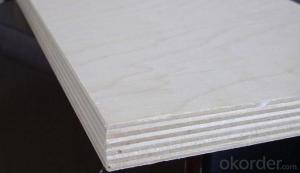Plywood 1 1/2: The Thicker Option for Extra Strength
When it comes to choosing the right material for your next project, thickness can be a crucial factor. Plywood 1 1/2 is a popular choice among DIY enthusiasts and professionals alike for its robustness and versatility. In this article, we’ll dive into the world of 1 1/2-inch plywood, exploring its benefits, applications, and how to work with it.
The Beauty of Plywood 1 1/2
Plywood is a type of engineered wood that is made from thin layers of wood veneer, known as plies, which are glued together. The 1 1/2-inch thickness of plywood offers a unique combination of strength and stability that is hard to find in other materials. It’s thicker than the standard 3/4-inch plywood, providing additional support and durability for a wide range of applications.
Why Choose Plywood 1 1/2?
One of the main reasons to choose plywood 1 1/2 is its strength. With its thicker plies, it can handle more weight and resist warping better than thinner options. This makes it ideal for heavy-duty projects such as furniture construction, shelving, and even structural elements in building.
Applications of Plywood 1 1/2
Plywood 1 1/2 is a jack-of-all-trades in the world of woodworking. Here are some of the common applications where its thickness and strength shine:
– Furniture Making: From tables and chairs to beds and storage units, plywood 1 1/2 can take the abuse of everyday use while maintaining its shape and integrity.
– Shelving: Whether you’re building bookshelves or industrial-style storage solutions, the extra thickness provides the rigidity needed for a stable and long-lasting shelf.
– Flooring Underlayment: Before laying down hardwood or laminate flooring, a layer of 1 1/2-inch plywood can create a solid, even surface that prevents creaking and ensures a professional finish.
– Structural Components: In some cases, plywood 1 1/2 can be used as part of the structural framework for buildings, offering a reliable base for heavier loads.
– Outdoor Projects: Due to its strength and availability in exterior-grade options, plywood 1 1/2 is perfect for projects that will be exposed to the elements, such as decks, patio furniture, and garden structures.
Working with Plywood 1 1/2
While the benefits of plywood 1 1/2 are clear, working with it can be a different story. Here are some tips to make your woodworking experience smoother:
– Cutting: Use a sharp blade and take your time to ensure clean cuts. A circular saw or table saw with a fine-tooth blade designed for plywood is recommended.
– Drilling: Pre-drill holes to avoid splitting the wood veneer. Start with a smaller bit and gradually increase the size if needed.
– Sanding: The thicker plies can make sanding a bit more challenging, but it’s essential for achieving a smooth finish. Use a random orbital sander for larger surfaces and a detail sander for edges and corners.
– Joining: Plywood 1 1/2 can be joined using a variety of methods, including screws, nails, and wood glue. Choose the right technique based on the project’s requirements and the load it will bear.
The Environmental Impact of Plywood 1 1/2
Plywood is often considered an environmentally friendly option due to its use of wood veneer layers, which can make efficient use of timber resources. However, it’s important to consider the type of wood and the adhesives used in its production. Look for plywood that is certified by the Forest Stewardship Council (FSC) or has low-VOC (volatile organic compound) adhesives to minimize environmental impact.
Cost Considerations
Plywood 1 1/2 is generally more expensive than its thinner counterparts due to the increased material and manufacturing costs. However, the extra cost can be justified by the durability and longevity it offers, especially for projects that require a strong and stable base.
Final Thoughts on Plywood 1 1/2
In conclusion, plywood 1 1/2 is a fantastic choice for those seeking a material that combines strength, stability, and versatility. Whether you’re a seasoned woodworker or a DIY beginner, understanding the benefits and proper techniques for working with this thicker plywood can lead to successful and long-lasting projects. So, the next time you’re planning a project that demands a bit more oomph, consider reaching for the plywood 1 1/2. It might just be the key to your creation’s success.

